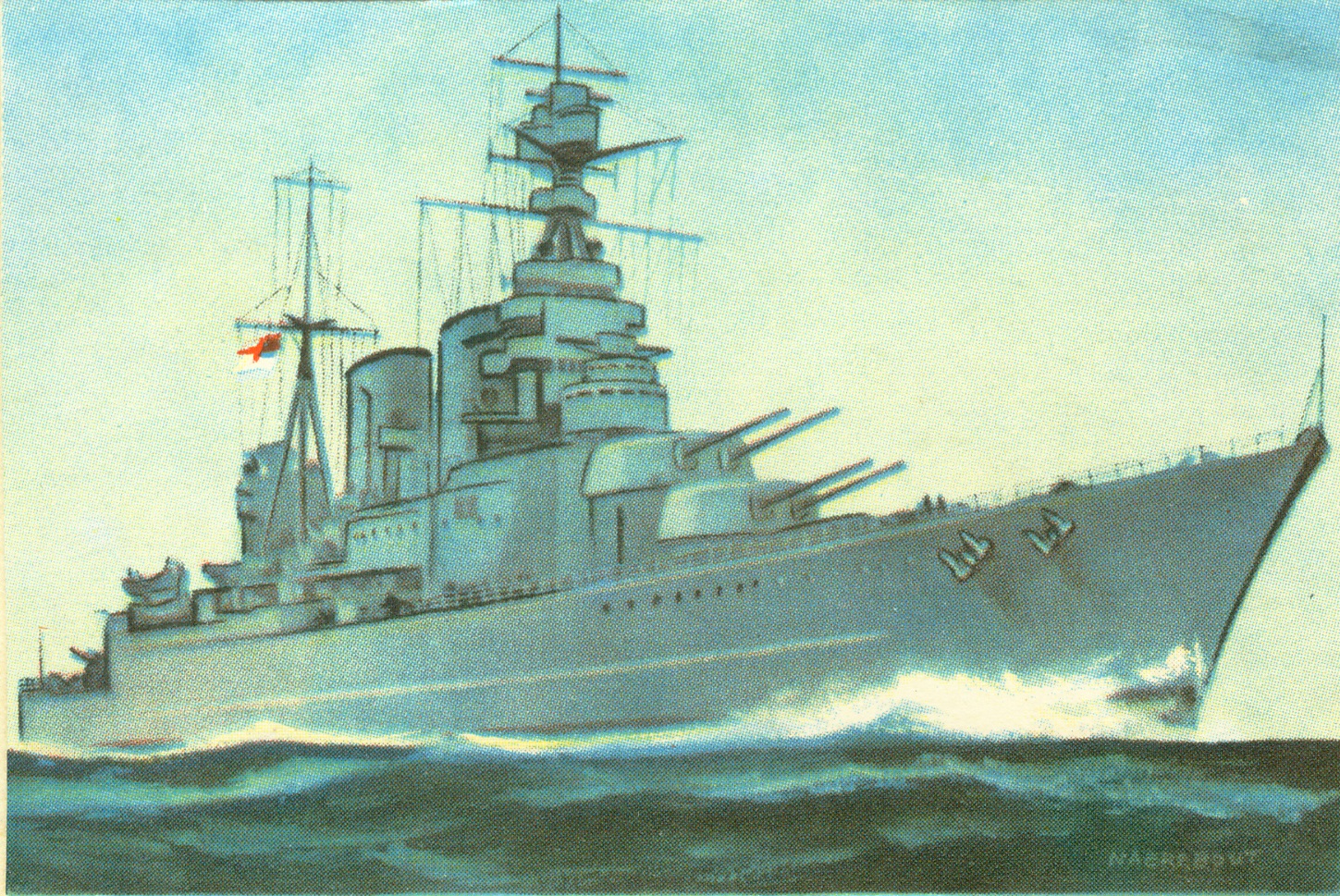Preliminary design for the British battle cruiser HMS Hood [1919]
Drawing made by G.J. Frans Naerebout and published in Op de Lange Deining written by G.A.J. Bovens
Notes
1. Nicknamed Mighty Hood. Pennant 51. Her building at the shipyard of John Brown&Company was ordered on 7 April 1916, laid down on 1 September, launched on 22 August 1918, commissioned on 15 May 1920 as world largest warship, sunk on 24 May 1941 during her battle with the German battleship Bismarck. The only one of the four projected Admiral class battle cruisers caused by an sufficient design despite the modifications after the Battle of Jutland (31 May-1 June 1916). During this battle England lost battle cruisers due to the weakness of their armour. Building costs 6.025.000 pond sterling. With a displacement of 46.680 long tons/47.430 tons (deep load) and as dimensions 262,3 x 31,8 x 9,8 metres or 860’7”x 104’2”x 32’0”. The geared Brown-Curtis steam turbines with the 24 Yarrow water-tube boilers delivered via 4 shafts and screws144.000 shp allowing in 1920 a speed of 31 knots which was by 1941 reduced to 28 knots. With a reduced speed of 20 knots she had in 1931 a range of 5.332 nautical miles. Her crew numbered 1.433 (in 1919)-1.325 (by 1941). The original armament consisted of 4x2-15”/38,1cm guns, 12x1-5,5” guns, 4x1-4” anti aircraft guns and 6-21”?53,3cm guns. When she met her final fate was she armed with 4x2-15”/38,1cm guns, 7x2-4” quick firing anti aircraft guns, 3x8-2pd quick firing anti aircraft pom pom, 5x4-0.5” machine guns, 5x20- barrel unrotated projectile mounts and 2x2-21”/53,3cm surfaced torpedo tubes. She was also armoured with a 6-12”/15,2-30,5cm thick belt, a 3”-0.3’/7,6-1,9cm deck, 4”-5”/10,2-12,7cm bulk heads with the barbettes, gun turrets and conning tower protected by respectively 5“-12”/12,7-30,5cm, 11”-15”/27,9-38,1cm and 9”-11”/22,9-27,9cm. The scheduled major rebuilding planned in 1941 was never realized due to the outbreak of the Second World War
2. The Admiral-class, preceded by the Courageous-class, to be succeeded by the cancelled G3 battle cruisers, consisting of the Hood, Anson, Howe and Rodney, the latter 3 finally cancelled on 27 February 1919.


